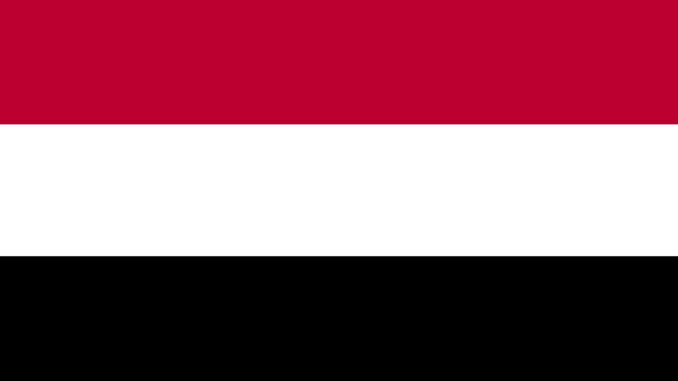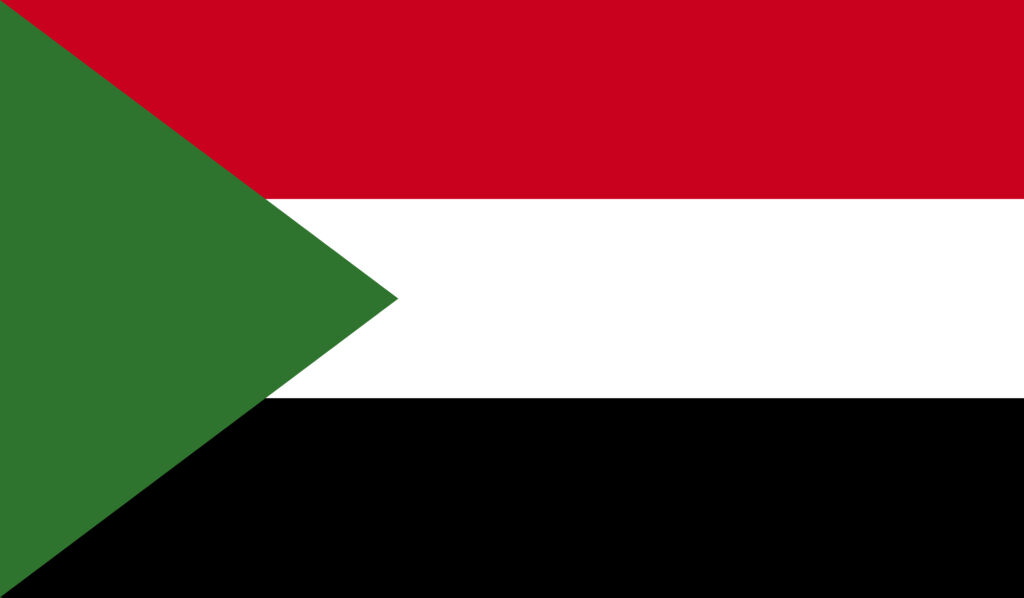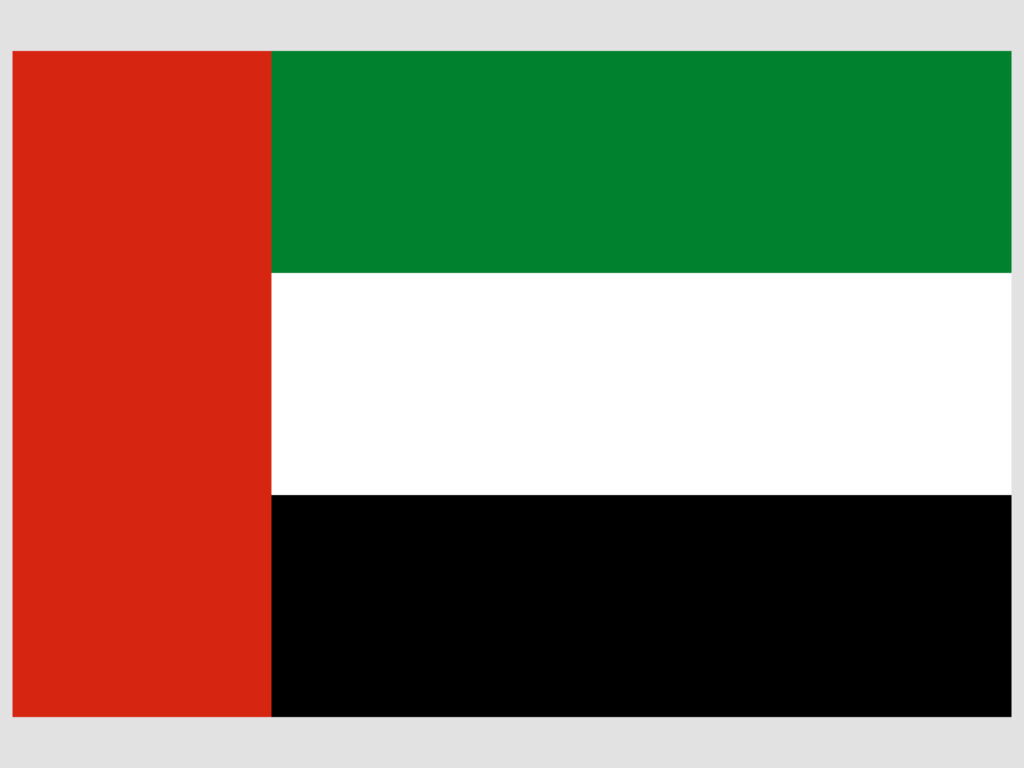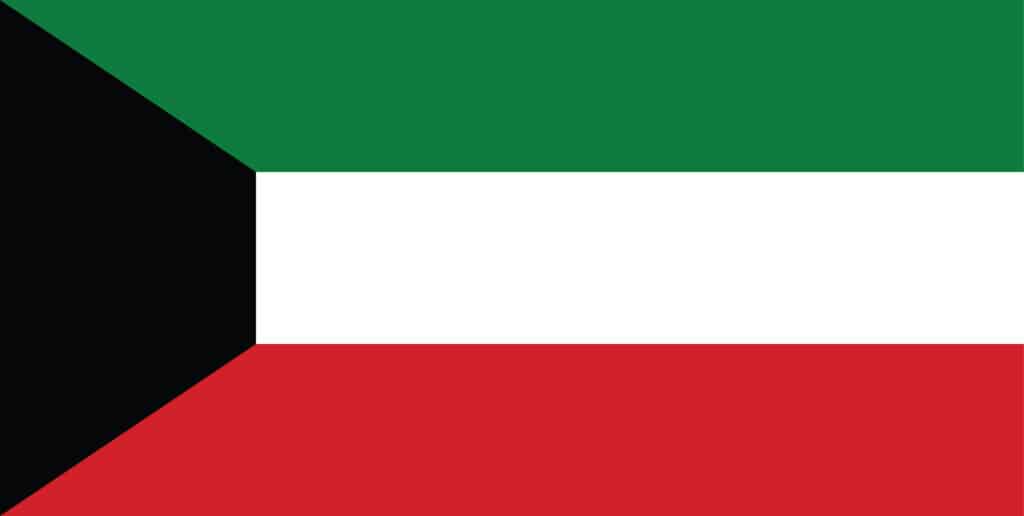
Countries use flags to symbolize themselves, and the colors on the flag often have their own meanings as well. If you’re wondering about the history and origin of these flag designs, then you might be curious about what country has the black, white, and red colors on their flag.
The Republic of Yemen is the only current national flag with just black, white, and red, although Syria, Sudan, Iraq, the United Arab Emirates, and Kuwait all have similar designs.
There are a number of countries that have these colors in their flags, but Yemen is the only country that exclusively uses a black, white, and red color scheme to represent themselves. The rest of this article will dive into the appearance, meaning, and history of this flag, as well as noting several other flags with similar color schemes.





What Does the Yemen Flag Look Like?
The Yemen flag is a black, white and red flag consisting of three equally sized colors. From top to bottom, the colors are red, white, and then black.
Similar Flag Designs
The flag of Iraq is extremely similar in that it consists of these same colors in the same vertical order but with a green Kufic script in the center that reads “God is the greatest.”
Another flag that’s very close to the Yemen flag is the flag of Sudan, which features the same three colored stripes in the same vertical order, with the addition of a green triangle along the left border.
The flag of Kuwait is composed of four colors: green, white, red and black. Green, white, and red make up the horizontal stripes from top to bottom, respectively, and the black forms a trapezoidal shape jutting out from the left edge of the flag.
Palestine has similar colors as well, with black, green, and white creating three horizontal stripes from top to bottom, with a red triangle on the left border. The Sahrawi Arab Democratic Republic has the exact same flag design as the Palestinian flag, except for the red star and crescent in the center stripe.
Pan-Arab Colors
As a Western Asian country on the southern end of the Arabian Peninsula, the Yemen flag demonstrates what is known as Pan-Arab colors on its flag. The four colors composing this motif are black, red, white, and green, which all have significant meaning in Arabic history and culture.
Black is symbolic of the Black Standard, which was adopted by Abbasid and Rashidun caliphates. Similarly, white represents the colors of the Fatimid and Umayyad caliphates. Green is a color largely associated with Islam, as well as the Rashidun caliphates. Lastly, red represents the dynastic color of the Hashemites.
Although not an exclusive reason for these four colors, Safi al-Din al-Hilli, an Iraqi poet, largely inspired the design of these colors with his poignant poetry.
Arab Literation Colors
If you’ve been paying attention, then you might be wondering why the Yemen flag doesn’t feature what is arguably one of the most important colors on the Pan-Arab flag color scheme: green. In large part, that’s due to the influence of Arab Liberation colors, which is branch of the Pan-Arab colors that gained prominence in the 1950s.
These colors largely focused on the tricolors black, white and red, with green being omitted entirely or included in some small capacity. While it was often flown alongside the official flag, the Arab Liberation Flag had no official status.
These Arab Liberation colors were inspired by the flag of the Arab Liberation, which was a flag with—you guessed it—red, white, and black stripes. This flag also featured a golden eagle in the center.
This golden eagle is referred to as the Eagle of Saladin, a representation of the ancient eagles depicted on Egyptian temples and a memory of Saladin, the first Sultan of Egypt. Over time, this eagle—and the flag as a whole—became a symbol of Arab liberation and the driving force behind the designs of the Egyptian, Iraqi, Sudanese, Syrian, and Yemen flags.
History of Yemen’s Flag
The flag of Yemen was officially adopted on the 22nd of May, 1990, the very same day that North and South Yemen were united. The Yemen flag is basically the Arab Liberation flag introduced in the Egyptian Revolution in the ‘50s, and, at its heart, is a symbol of Arab nationalism.
The official description of these colors denotes that red stands for unity among its people and the blood of the martyrs, white for the brightness of the future, and black for the country’s dark past—and quite the past it has. In large part, the history of Yemen is influenced by the emergence of several dynasties from the 9th to 16th centuries.
The country was controlled by the British and Ottoman empires in the 1800s, and after a century and a half, the Yemen Arab Republic would be created in 1962.
South Yemen would remain a protectorate of Britain until a few years later when, in 1967, it became an independent state. These two Yemeni states would eventually unite in 1990 to form what is today known as the modern Republic of Yemen.
Ali Abdullah Saleh became the very first president of this united new republic until he resigned in 2012 after the Arab Spring, a series of anti-government protests, revolts, and uprisings.
Since then, the country has been in a severe state of crisis, with up to 85% of the people in Yemen, to the sum of 24 million people, needing humanitarian aid. Similarly, the country is ranked highest in the Fragile State Index, and second worst in the Global Hunger Index.
Final Thoughts
Flags around the world have strong symbolic components that represent the beliefs, struggles, and history of its people, and the flag of Yemen is no different. With the Arab nationalist movement in the ‘50s inspiring the creation of the Yemen flag, this woven cloth design certainly speaks to the beliefs of the Yemeni people.
